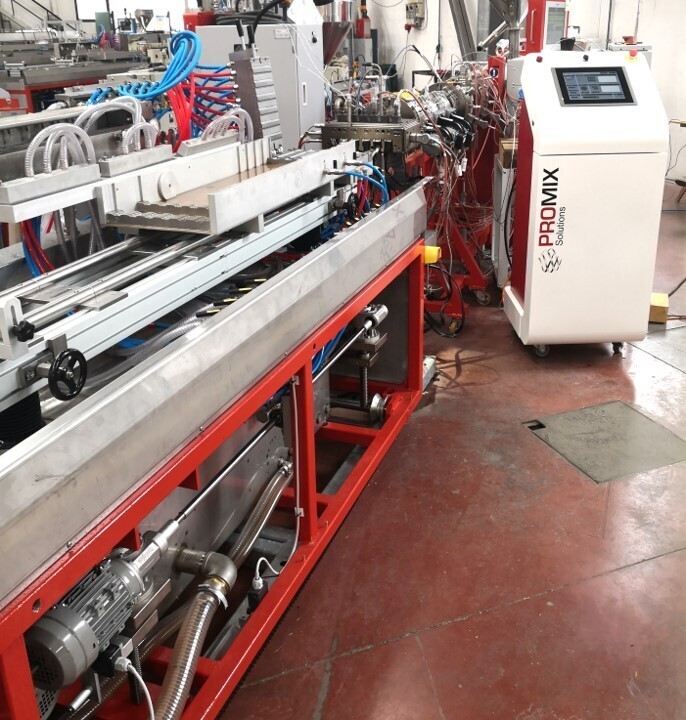

The insulation characteristics of window systems are largely defined by the function of so-called thermal break profiles which create a thermal barrier for heat transfer between parts like window frames. With Promix Solutions' Microcell Technology, thermal break profiles are physically foamed through the controlled addition of atmospheric gases, enabling a further improvement in insulation performance.

In building and construction applications this “thermal bridge” prevents heat from entering or leaving the building, by means of an increased insulation performance resulting in energy efficient constructions with an improved carbon footprint. This feature is particularly important in areas with large temperature fluctuations and very cold winters and / or hot summers.
In particular, aluminum windows would benefit from a special design where the flow of heat is interrupted, due to the good heat conduction of metals in general. This leads to overly cold windows in winter and very hot windows in summer. A lot of energy is wasted to maintain a comfortable internal temperature.
Thermal break profiles made of polyamide are used to separate the inner and outer window profiles. Typically, a glass-fiber-filled solution is used to ensure sufficient mechanical stability in the window frame, withstanding significant force, e.g. in high-rise buildings. Polyamide with 25% glass fibers has an insulation value of lambda = 0.40 W/(m-K), which is > 400 times more efficient for thermal insulation vs aluminum, which has a lambda value of about 160 W/(m-K).
To reduce the heat transfer, one thermal bridge is sufficient, hence further reduction of the insulation properties of thermal break profiles is a useful approach to gain energy efficiency. This has been achieved in the industry leading to a next generation of lower lambda value thermal break profiles. With the same material selection, profiles are now physically foamed to generate a microcellular cell structure made from atmospheric gases like nitrogen or carbon dioxide.
The density of the polyamide composite in these profiles is reduced from 1.31 kg/dm³ to 1.0 ± 0.1 kg/dm³ and the lambda value is further lowered to about 0.20 W/(m-K).
Due to the microcellular structure, the mechanical properties of the profiles are comparable to those of rigid ones, but with significantly improved insulation between the aluminum profiles, setting a new industrial performance standard. This is necessary to fulfil today's strict insulation regulations for buildings and growing request for sustainable and cost-saving building solutions.
Promix with its microcell technology, is the pioneering provider enabling such reduced densities in hot or cold extrusion lines. More than 40 extrusion lines are running using this technology with an ever-growing number.
Responses








